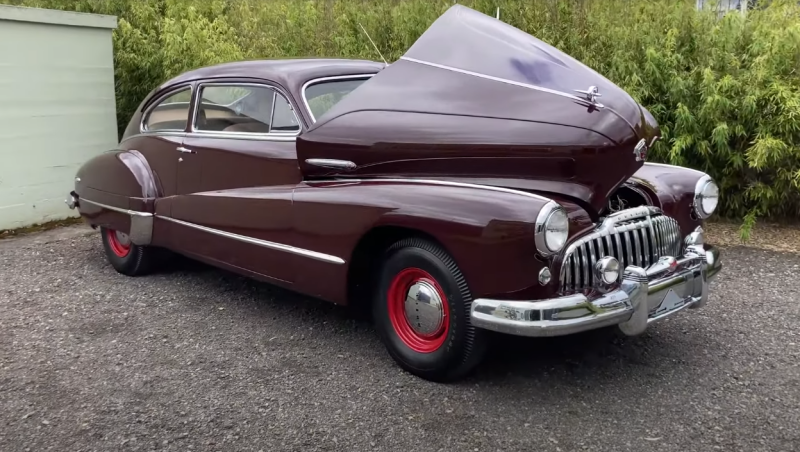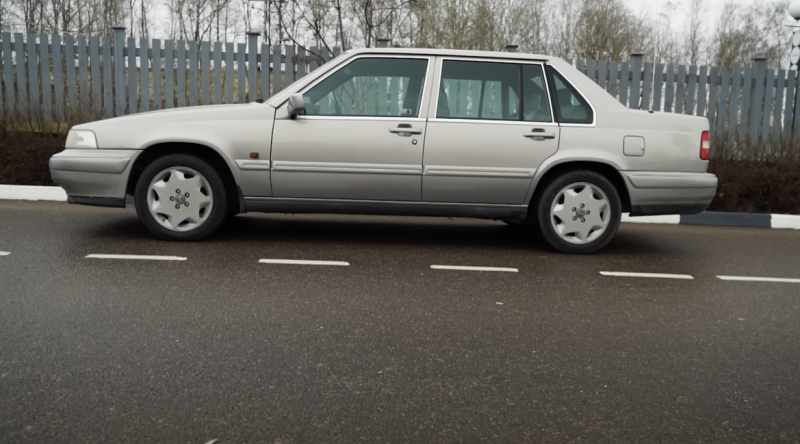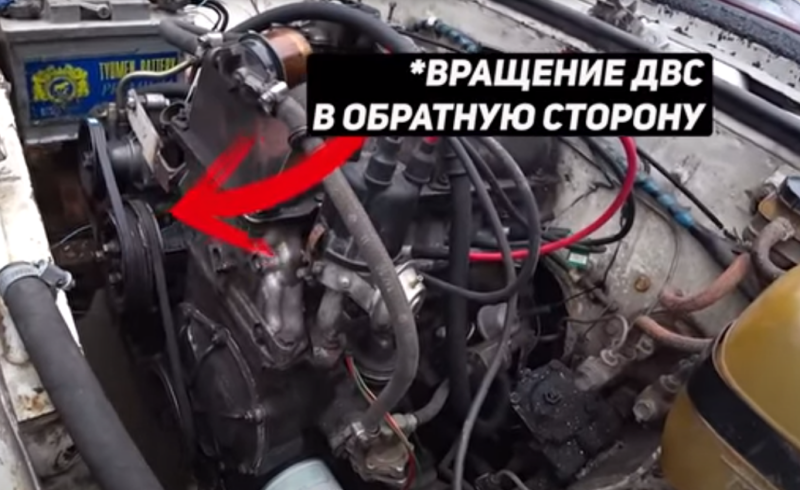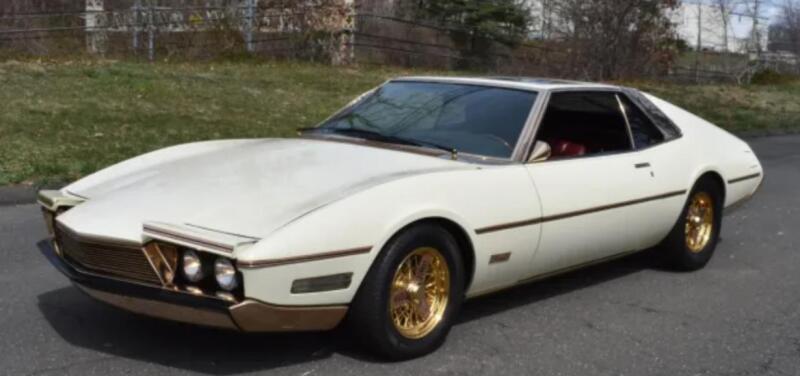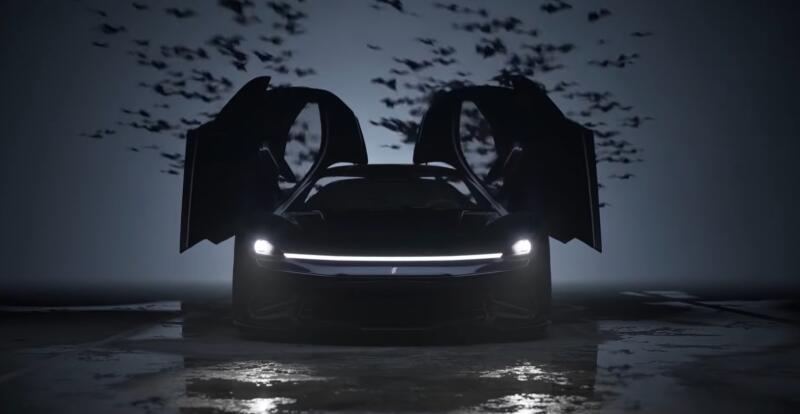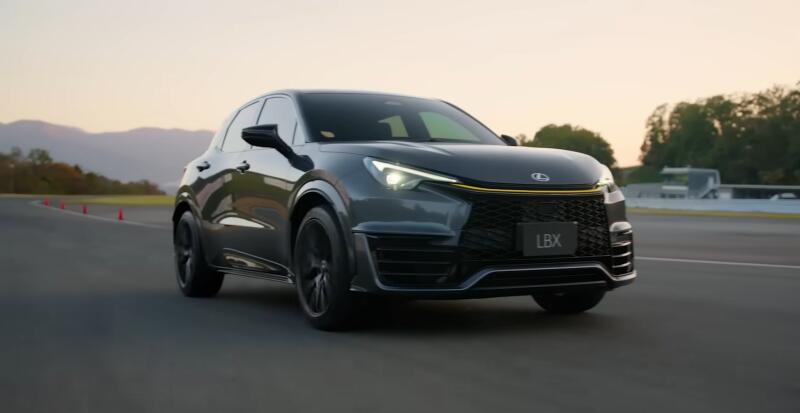The car, standing next to which the owner could see the roof, caused bewilderment. Developers of Buick Roadmaster 1946-1948 did not disappoint the user with its dimensions, as well as with other parameters. Therefore, a strong, self-confident old timer is valued today as an elite variety of wine, aged for decades. The auction house Heritage Auctions sold one copy for $170 thousand in 2012.
How the model was created
The name "Roadmaster" was used by Buick intermittently in different years: 1935-1942, 1946-1958, 1990-1996. We were interested in post-war production. Moreover, we have narrowed the perspective to 1946-1948.
 The Buick Roadmaster was called the “master of the road” in the late 40s. Photo: YouTube.com
The Buick Roadmaster was called the “master of the road” in the late 40s. Photo: YouTube.comAt that time, the accumulated consumer demand was completely exhausted. The American auto industry was just rebuilding onto peaceful tracks. Manufacturers began by frantically redesigning pre-war models.
Our hero Buick Roadmaster was also a relic of pre-war concepts and materials - the Special and Century models. But only to some extent, because Harley Earl took up the matter. Subsequently, the designer with the title “great” took pride of place in the world gallery of automotive industry fame. Without a couple of words of gratitude about the master, it is difficult to continue the conversation.
Who are you, Harley?
H. Earl (1893-1969) was not a random person in the stylist profession. The family owned a business producing and repairing horse-drawn vehicles. The workshops created magnificent “Roman” chariots, stagecoaches, and phaetons. Then we moved on to car bodies.
 The Buick Roadmaster was designed with tall hat-wearing citizens in mind. Photo: YouTube.com
The Buick Roadmaster was designed with tall hat-wearing citizens in mind. Photo: YouTube.comThere was little experience at home. Harley, who excelled in the pole vault, shot put and auto racing, continued his engineering education at Hollywood High School and Stanford University.
In 1919, two of his models, which were produced by his father’s company, created a sensation at the auto show. The Los Angeles Times called the Marmon Phaeton "sensational" and the Chandler Town Car "a class act of its kind."
The family business was bought by entrepreneur Don Lee, who sent young talent to gain intelligence wherever possible. I got the hang of it and came up with the idea for the first time in the industry to hone body parts on plastic clay models. As he set the fashion, it has been carried on ever since.
Continuation of career
The ever-vigilant General Motors lured away the talent in 1925. Earl's clients included the entire West Coast elite.
 Buick Roadmaster convertible. Photo: YouTube.com
Buick Roadmaster convertible. Photo: YouTube.comOne millionaire during Prohibition ordered the designer a cunning thing - a Cadillac with monograms of his name and a secret box for transporting alcohol. The price of the car rose from 6 to 28 thousand dollars.
The stylist approached the creation of a car in such a way that:
every time you sit in it, you would relax, getting at least a little vacation for a while...
Work on the Buick Roadmaster occurred in the artist’s mature years. The car body bears several “marks” of the master.
Model overview: exterior
The car is good no matter how you look at it. To begin with, in terms of appearance, the designers moved away from the archaics of past years: massive running boards, double-leaf hoods. The latter in the Roadmaster model were one-piece with double-sided hinges, so you could get into the engine compartment from the left and right.
 Impressive front end of Buick Roadmaster (1946-1948). Photo: YouTube.com
Impressive front end of Buick Roadmaster (1946-1948). Photo: YouTube.comChrome was saved in the post-war years, so the car would not become a victim of magpies, which, as you know, carry everything shiny. Nevertheless, the radiator grille with its vertical structure shines with large “teeth”.
The bumpers also sparkle and extend far beyond the boundaries of the car. The brutal front and rear parts are complemented by large bump stops with company logos. The irony is that, while caring about powerful protection of the front and rear, the developers did not attach due importance to the strength structure of the hull.
The cars came in 4-door sedans, 2-door fastbacks and convertibles. Dimensions:
✅ Length – 5515/5524 mm
✅ Width - 1997 mm
✅ Height – 1650/1655 mm
✅ Wheelbase - 3277 mm
✅ Tires – 15 inches
On the hood there was a thing inspired by Harley Earl of World War II - a fashionable "bomb sight" badge. Another signature thing, which then shaped the appearance of Buick and other brands for a long time, was the original concept of Aeroprofil.
 The Buick Roadmaster is an exotic sight in the modern city. Photo: YouTube.com
The Buick Roadmaster is an exotic sight in the modern city. Photo: YouTube.comThe relief of the body, in which the front fender does not end at the door, looked attractive. Curving smoothly, it extends further and rests on the protruding rear fender. In comparison with this solution, the sidewalls of cars from other manufacturers looked monotonous.
The Roadmaster's body was eye-catching with its incredibly smooth design. Motorists were looking for style and confidence in America and found it in the product offered. And some conservatism of the exterior only added to the charm.
Interior
The Buick model, which was below Cadillac in the GM hierarchy, was successful. The cars cost from 2014 to 2297 dollars. Many users weren't looking for arguments in favor of flashy, rich Caddies and took Buicks.
 Inside the Roadmaster. Photo: YouTube.com
Inside the Roadmaster. Photo: YouTube.comIn the 50s, Buick, with the image of a budget manufacturer, reached fourth place in sales in the country. The Roadmaster model began to be called the “master of the roads.”
In the interior, Harley Earl did such a good job that even Italian designers were inspired and implemented some details in custom cars. For example, the gauges on the dash are grand instruments with brass surrounds and wonderful stylized numbers.
Sofas covered with textiles are not divided into armchairs and are comfortable without any adjustments or lateral supports. A huge steering wheel with a thin metal ring inside does not involve any flying out or folding.
The steering column-mounted shift lever for the 3-speed manual transmission is a supreme ergonomic achievement. By the way, in 1948 an optional 2-speed DynaFlow automatic transmission was added. The measure increased sales from 31400 units to 80 thousand per year.
 Instruments on a Buick Roadmaster. Photo: YouTube.com
Instruments on a Buick Roadmaster. Photo: YouTube.comIt's nice that echoes of the great era can be seen in the central section with magnificent, neat handles, completely integrated into the panel. And the radio... A fantastic tube apparatus filled the cabin with a unique warm sound.
Technical stuffing
After decades, the car is considered one of the most advanced designs of the late 40s. The engineers managed to intelligently link the weight of the car (1857 kg), suspension, engine, tires and seats.
In a harmonious combination, these components provide the necessary softness and confidence in the ride. You have comfort and impeccable build quality. And if you need to extract the power under the hood, there are no problems - the steering wheel and pedals respond adequately.
 Buick Roadmaster engine compartment. Photo: YouTube.com
Buick Roadmaster engine compartment. Photo: YouTube.comAs for the engines: gasoline, 8-cylinder, 4-stroke. Located longitudinally in front. Characteristics:
✅ Volume - 5247 cm3
✅ Power - 144 liters. With. at 3,6 thousand rpm
✅ Torque – 374 N*m at 2,0 thousand rpm
The driving wheels are rear. Spring suspension: independent at the front, dependent at the rear. All-round hydraulic drum brakes.
 The 4-door Buick Roadmaster sedan 1946-1948 accelerated to 120 km/h. Photo: YouTube.com
The 4-door Buick Roadmaster sedan 1946-1948 accelerated to 120 km/h. Photo: YouTube.comOf course, those who are nostalgic for physical controls will truly enjoy driving the Roadmaster. Great for the driver who is used to trusting himself and not his assistants. Cool for a driver who relies on his own experience, and not on an electronic brain.
It’s good for the owner that he’s used to keeping the situation on the road in his own hands, monitoring it with his eyes, and not with sensors and cameras, and literally resolving difficult moments. Others should not approach the old timer: it’s a man’s job, you know...
